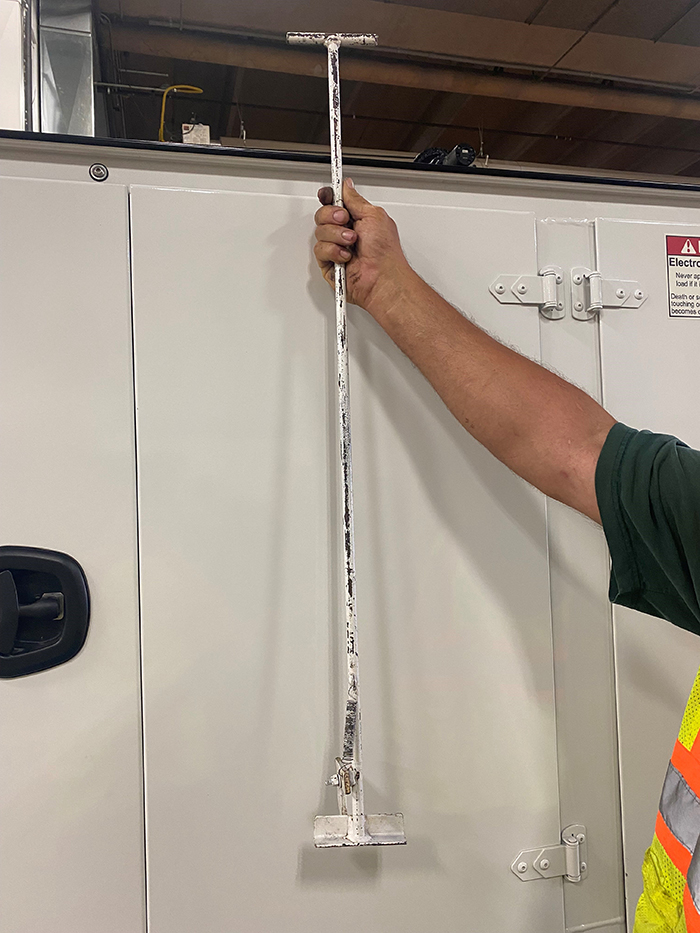OTC honored in build a mousetrap competition
News | Published on October 19, 2021 at 3:37pm GMT+0000 | Author: Chad Koenen
0Once again, the innovation of the Otter Tail County Highway Maintenance Department and employee Jonathon Bratvold are celebrated by the U.S. Department of Transportation Federal Highway Administration (FHWA).

The team earned an Honorable Mention Innovative Project Award for the “Sticky Stomp” which “simplifies the installation of chip seal markers on roadways.”
The tool allows one person to drive the pickup truck, while another person in the back installs the chip-seal markers without getting off the tailgate. The “Sticky Stomp” has doubled the speed of the installation with the same number of workers.
According to the assistant maintenance supervisor, Stephen Goerdt, the tool took about one hour to fabricate and cost less than $20 in materials.
Otter Tail County submitted the chip-seal installation tool to the Minnesota Local Technical Assistance Program (LTAP) and was named the 2021 state runner-up in the competition. LTAP submitted the “Sticky Stomp” to the national “Build a Better Mouse Trap” program.
“I also created the Otter Plow Cushion in 2018,” said Jonathon Bratvold, Otter Tail County highway maintenance worker. “I like to think outside the box, and to make simple tasks easier and more efficient.”
According to the FHWA, each year “Transforming Transportation Through Innovation recognizes innovation through the Build a Better Mousetrap (BABM) national competition. BABM shines a spotlight on those frontline workers who use their expertise and creativity to solve everyday problems that improve safety, reduce costs, and increase efficiency.”
“As always, I am very proud of our highway maintenance workers for how they continue to look for ways to improve how we get things done,” said Chuck Grotte, County Highway Engineer.
The Local Technical Assistance Program (LTAP) and the BABM national competition features local and tribal agencies that are responsible for more than 3 million miles of roadways and roughly 50 percent of the bridges in the United States. By sharing these innovations with one another, local road departments can adapt these new tools and practices, and deliver more efficient, cost-effective services to their communities.
